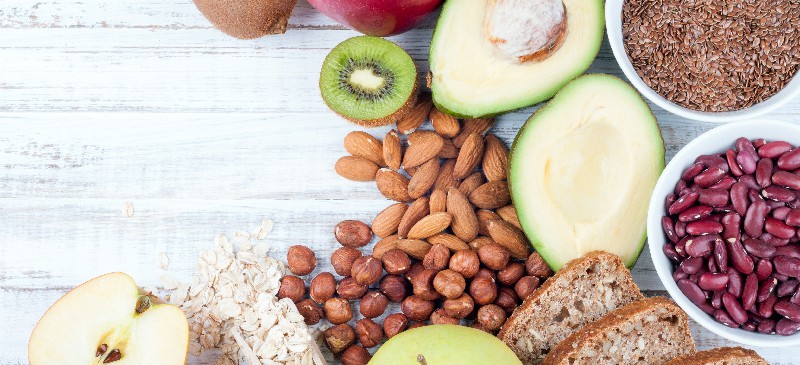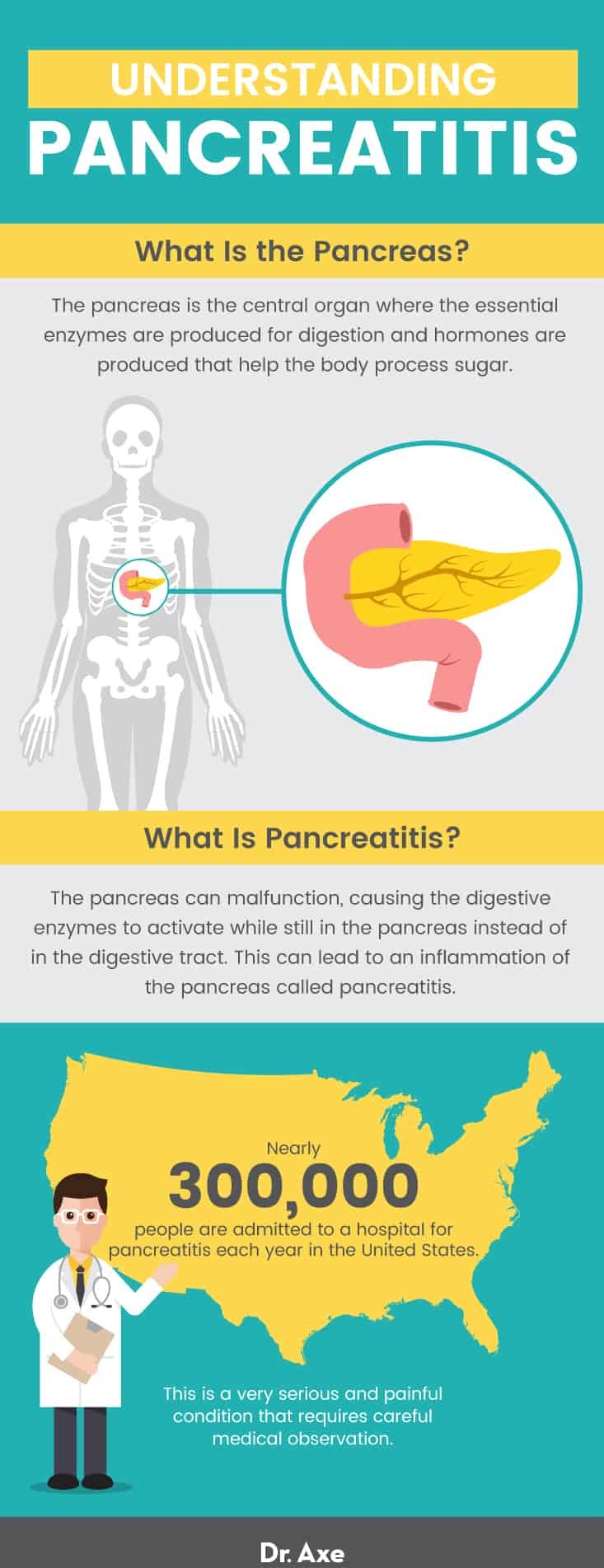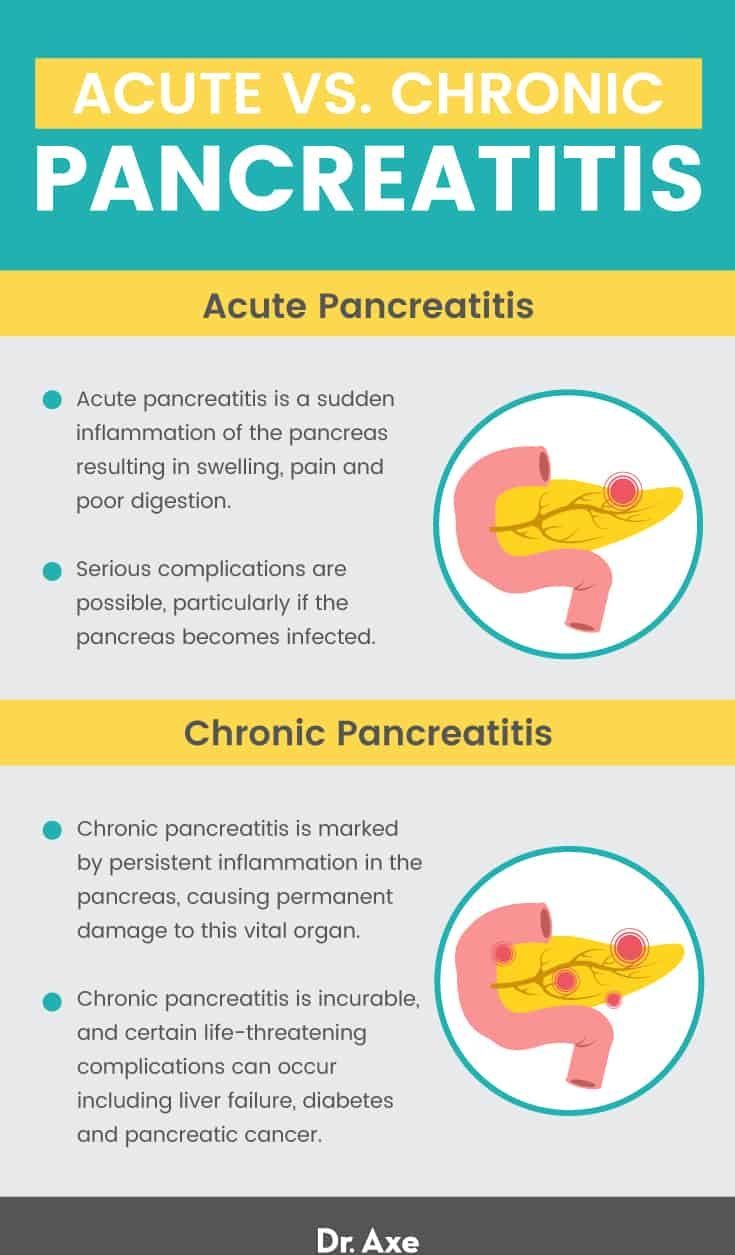This Dr. Axe content is medically reviewed or fact checked to ensure factually accurate information.
With strict editorial sourcing guidelines, we only link to academic research institutions, reputable media sites and, when research is available, medically peer-reviewed studies. Note that the numbers in parentheses (1, 2, etc.) are clickable links to these studies.
The information in our articles is NOT intended to replace a one-on-one relationship with a qualified health care professional and is not intended as medical advice.
This article is based on scientific evidence, written by experts and fact checked by our trained editorial staff. Note that the numbers in parentheses (1, 2, etc.) are clickable links to medically peer-reviewed studies.
Our team includes licensed nutritionists and dietitians, certified health education specialists, as well as certified strength and conditioning specialists, personal trainers and corrective exercise specialists. Our team aims to be not only thorough with its research, but also objective and unbiased.
The information in our articles is NOT intended to replace a one-on-one relationship with a qualified health care professional and is not intended as medical advice.
Pancreatitis Diet + 5 Tips for Prevention & Management
March 1, 2023

About 200,000 people are admitted to the hospital for pancreatitis each year in the United States, and the number continues to rise. This is a very serious and painful condition that requires careful medical observation, but a pancreatitis diet and lifestyle changes can help prevent and treat this unpleasant condition.
While the majority of people recover well from acute pancreatitis, nearly 25 percent of those diagnosed will experience recurrent episodes, leading the disease to become chronic. Chronic pancreatitis puts you at a significantly increased risk of developing pancreatic cancer, diabetes, liver failure and other potentially life-threatening illnesses.
Not only is following a diet for pancreatitis necessary to help recover, but it is essential to help prevent this disease from entering the chronic phase. There are some individuals who are more prone to developing pancreatitis, including those with a history of substance abuse, use of certain prescription drugs, unhealthy eating and genetics.
Light to moderate exercise, yoga and meditation can help manage the symptoms, and avoiding alcohol and tobacco is absolutely necessary for recovery. Whether you’ve been recently diagnosed with acute pancreatitis or chronic pancreatitis, the first step is adopting a healthy diet focusing on fresh fruits and vegetables, whole grains and lean proteins.
Keep reading to find out how to follow a pancreatitis diet to treat and prevent this condition.
What Is Pancreatitis?
The pancreas is the central organ where essential enzymes are produced for digestion and hormones are produced that help the body process sugar. The pancreas can malfunction, causing the digestive enzymes to activate while still in the pancreas instead of in the digestive tract.
This can lead to inflammation and pancreatitis. In both acute and chronic patients, scar tissue may form, causing the pancreas to not perform optimally or even fail.
Acute pancreatitis is a sudden inflammation of the pancreas resulting in swelling, pain and poor digestion. Serious complications are possible, particularly if the pancreas becomes infected.
Chronic pancreatitis is marked by persistent inflammation of the pancreas, causing permanent damage to this vital organ. Chronic pancreatitis is incurable, and certain life-threatening complications can occur, including liver failure, diabetes and pancreatic cancer.

Symptoms
When you have pancreatitis, you may experience any of the following symptoms. For some, symptoms may be mild, but for others, symptoms may be debilitating.
Acute Pancreatitis Symptoms:
- Pain in the upper abdominal area
- Pain that radiates from the upper abdomen to the back or shoulders
- Pain that worsens after eating
- Abdomen is tender to the touch
- Elevated temperature or fever
- Rapid pulse
- Nausea
- Vomiting
Chronic Pancreatitis Symptoms:
- Pain in the upper abdomen that persists or that may come and go
- Weight loss, often dramatic, without trying
- Stools that are oily and smelly
Causes and Risk Factors
There are several possible causes for pancreatitis, many of which are linked to diet and overall wellness. However, there are times where pancreatitis is the result of a physical injury, surgery or other medical condition.
Recognized risk factors include:
- Alcoholism
- Gallstones
- ERCP, a surgical procedure for gallstones
- Cigarette smoking
- High calcium levels in the blood
- Hyperparathyroidism
- High triglyceride levels
- Infection
- Injury to the abdomen
- Cystic fibrosis
- Abdominal Surgery
- Certain medications
- Pancreatic cancer
- Genetics
- High-fat diet, particularly for those with type 2 diabetes, as shown in human and animal studies
Dangers
Left untreated, pancreatitis can cause serious complications and even death. Seeking emergency medical intervention is necessary when symptoms present.
- Pseudocysts accumulate fluid and debris in pockets. If they rupture, they cause infection and internal bleeding.
- Inflammation in the pancreas makes it vulnerable to bacteria and infection. Surgery may be required in some cases.
- Kidney failure may arise, requiring dialysis.
- Breathing problems may develop as chemical changes in the body can affect oxygen levels.
- Diabetes may occur as insulin-producing cells are damaged.
- Malnutrition is fairly common as the pancreas produces fewer enzymes, making it difficult to break down and process essential nutrients.
- Pancreatic cancer is associated with long-term inflammation of the pancreas often due to chronic pancreatitis.

What to Do If You Suspect Pancreatitis
DO:
- If symptoms are severe, seek emergency medical attention immediately.
- If symptoms are mild or moderate, make an appointment with your physician.
- Eat small, light meals that are low in fat.
DON’T:
- Discount the symptoms as just discomfort.
- Consume a high-fat meal.
- Drink alcohol or smoke.
Pancreatitis Diet
After a diagnosis of acute or chronic pancreatitis, nutrition must be the first priority. The goal with a pancreatitis diet is to prevent malnutrition, nutritional deficiencies and optimize blood sugar levels while protecting against kidney and liver problems, pancreatic cancer and worsening symptoms.
Columbia University’s Pancreas Center recommends focusing on a nutrient-dense diet high in lean proteins, whole grains, fruits, vegetables and low-fat dairy products while avoiding greasy fried foods and alcohol. Its program recommends annual blood tests to determine any nutrient deficiencies and recommends supplementation as necessary.
The diet recommended by Columbia University is very similar to the Mediterranean diet followed for generations throughout Greece, Italy and Spain. Countless studies have found that this way of eating helps:
- lower the risk of type 2 diabetes
- improve A1C levels
- improve cognition and elevate mood
- stave off Alzheimer’s disease and heart disease
- protect against many gastrointestinal cancers
- and is associated with lower a lower risk of pancreatic cancer
The traditional Mediterranean diet may be a touch too high in fats for some individuals with pancreatitis, but it is easily modified. Yes, even healthy fats like olive oil, coconut oil, and those from wild-caught fish and grass-fed meats can be too intense for some with this condition.
Like so many other diseases, the first step it to listen to your body and recognize the foods that make you feel at your best.
The majority of each meal should focus on fruits, vegetables and whole grains with proteins and fats playing a supporting role.
Many experts support the following daily servings as a target:
- 3 servings of whole grains
- 2 servings of fresh fruit
- 5–7 servings of vegetables
- 1 serving of nuts
- 1 serving of lean animal protein
- 1 serving of low-fat dairy
Weekly:
- 3 servings of wild-caught fish
- No more than 2 servings of beef or lamb
- 3 servings of eggs
- 3–4 servings of chicken or turkey
- 3–4 servings of nuts or seeds
- 1–2 servings of heart-healthy sweets
- 4–6 servings of legumes
The real goal here is to provide the body with foods that are easy to digest and don’t cause the blood sugar to spike, while also keeping you satisfied. It is important to eat foods to address any nutritional deficiencies that pancreatitis may be causing.
Remember, this is a guideline. If you have pancreatitis and there are foods on this list that you know you are allergic or sensitive to, please avoid them.
Top 8 Fruits:
- Blackberries and blueberries: These berries are rich in resveratrol, manganese, fiber, and vitamins C and K, which support healthy digestion while fighting cancer. Try this bright and nutrient-dense blackberry lemon salad that features heart-healthy olive oil, sesame seeds and almonds.
- Cherries: Low in calories and high in essential nutrients, cherries are a perfect snack that supports weight loss, reduces inflammation and promotes restful sleep.
- Watermelon: Excellent source of vitamins A, B and C as well as potassium, magnesium and manganese, have a watermelon smoothie for breakfast or an afternoon snack. The protein in this recipe comes from coconut yogurt and chia seeds.
- Black plums: With a low glycemic index, plus proven to lower cholesterol and aid in digestion, plums are a perfect fruit to eat on a pancreatitis diet.
- Red grapes: The polyphenols in grapes have been shown to help prevent obesity and type 2 diabetes while lowering inflammation. To incorporate them into your diet and reap the help benefits, have a handful as a snack, or try this satisfying grape, chicken and walnut salad.
- Mangos: With healthy fiber and vitamin C, mangos also contain essential minerals, including iron, calcium, potassium and magnesium. This super fruit is associated with improved blood glucose levels and glycemic control. As an occasional sweet treat, try this amazing mango coconut ice cream, which gets its richness from egg yolks and coconut milk and its sweetness from raw honey and the mangos.
- Apples: Because they are naturally high in fiber, help lower inflammation and aid in digestion, apples make a quick, healthy snack. As a side dish or dessert, this baked quinoa and apple dish is both warming and satisfying, while also supplying protein and healthy fiber.
- Pomegranate: Sweet and crunchy, this super fruit is loaded with fiber, potassium, and vitamins C and K. Take a handful, and toss them on top of protein-rich hummus as they do in many areas of the Middle East.
Top 7 Vegetables:
- Beets: Packed with essential nutrients like iron, manganese, copper, potassium and the B vitamins, beets are known to improve heart health, brain health and support liver function. Try this family-friendly roasted beets with balsamic glaze alongside your favorite lean protein.
- Broccoli: Just a cup of cooked broccoli contains more than 100 percent of one’s daily value of both vitamin K and vitamin C. Also rich with minerals, this vegetable fights cancer and promotes digestive health. For a satisfying meal, try my recipe for alfredo chicken and broccoli casserole, featuring whole grain pasta, lean chicken, kefir and aged cheese.
- Spinach: Popeye wasn’t wrong. Spinach is packed with nutrients that boost immunity, protect against diabetes and protect against certain types of cancer. Try this mango walnut spinach salad, which combines many foods on the pancreatitis diet list.
- Kale: A cruciferous vegetable that demonstrates anti-inflammatory properties, supports detoxification and eye health, and protects against cancer, kale is a nutrient-dense leafy green perfect for any diet for pancreatitis. Add a few leaves to a smoothie, or replace some (or all!) lettuce in a salad with finely chopped kale.
- Lettuce: Salads are a big part of a Mediterranean diet and an easy way to ensure you meet the recommended five to seven servings of vegetables each day. Choose darker leaf lettuces and mixed wild greens to enjoy the highest levels of vitamins and minerals.
- Sweet potatoes: Rich with beta-carotene, vitamin C, copper, vitamin B6 and manganese, sweet potatoes are a healthy starch that tastes great. In the mornings, alongside a couple of cage-free eggs, this sweet potato hash brown recipe will leave you energized for the day.
- Carrots: Beta-carotene in carrots is associated with immune system health and eye health, as well as healthy digestion, while carrots are one of the most versatile vegetables on the planet. Enjoy carrots raw, cooked or juiced on your pancreatitis diet.
Top 6 Whole Grains:
Research shows that whole grains in a pancreatic diet should be encouraged.
- Brown rice: High in fiber and rich in manganese, replacing white rice with brown rice may be able to help lower your risk for type 2 diabetes by 16 percent. As a side dish, this gluten-free grain is relatively high in calories, so sticking with a single serving size is recommended.
- Buckwheat: High in protein and fiber, this gluten-free grain is rich in antioxidants and highly digestible. Buckwheat flour can be used for making a healthy morning pancake, while buckwheat groats can be added to salads or made into a morning porridge.
- Polenta: This rough grind of corn, similar to Southern grits, is used throughout the Mediterranean. Top it with mushrooms and legumes, a touch of feta cheese, and fresh herbs for a filling and satiating meal. Purchase organic, non-GMO polenta only.
- Millet: High in fiber, naturally gluten-free and easy to digest, millet is a seed, often misrepresented as a grain. This nutrient-dense seed is experiencing a renaissance because it is so very versatile. Explore millet recipes suitable for breakfast, lunch and dinner
- Teff: If you aren’t familiar with the Ethiopian grain teff, it’s time to introduce yourself. This grain promotes weight loss, boosts the immune system, supports bone health and aids in digestion. It’s available as a flour or grain, and you can use it to make porridges, pancakes and tortillas.
- Amaranth: Prized for thousands of years by the Aztecs, this grain is a great source of fiber, manganese and protein. This gluten-free whole grain aids in digestive health, reduces inflammation, fights the development of type 2 diabetes and aids in weight loss. Use in place of oats, white rice or pasta, and as a thickener for soups.
Top 5 Nuts and Seeds:
- Almonds: A distant relative of many stone fruits, the simple almond is packed with protein, fiber and a host of essential vitamins and minerals. Research shows they help control blood sugar levels, help with weight loss and may increase nutrient absorption of fat-soluble nutrients. Because of their relatively high-fat content, limit yourself to a single serving.
- Walnuts: A real nutrient powerhouse, walnuts provide omega-3s, supporting a healthy heart and brain while helping control inflammation and blood sugar levels. For an occasional healthy sweet treat, try my recipe for raw brownie bites, which features walnuts, almonds, cacao powder and dates.
- Sunflower seeds: Rich in the B vitamins and vitamin E as well as selenium and magnesium, sunflower seeds provide a healthy dose of essential fatty acids, amino acids and fiber. Eat in moderation, and stick to a half of a single serving as their fat content is relatively high.
- Pumpkin seeds: Once only a fall snack, pumpkin seeds are now available year-round. With a satisfying crunch and packed with healthy fats, protein and fiber, pumpkin seeds are tasty tossed on salads or enjoyed mixed into yogurt. As a snack, it’s hard to beat this recipe for spicy roasted pumpkin seeds.
- Pistachios: Grown throughout the Mediterranean, it is no surprise that pistachiosmake this list. They are known to help lower cholesterol and help with weight loss. Stick with one-half of an ounce as a serving due to the fat content. While they are great in pilafs and salads, it’s hard to beat a handful of pistachios for a quick burst of energy.
Top 4 Lean Protein Sources:
- Wild-caught fish: The typical Mediterranean diets feature a wild-caught fish or seafood at least twice each week. Wild-caught salmon is associated with healthy cognitive function, heart health and cancer protection.
- Poultry: Lean cuts of chicken and turkey are a great source of protein. Stick with grilling, baking or poaching – avoid frying to keep the fat content within healthy levels. To help with digestion, consume chicken bone broth that is naturally rich with collagen and L-glutamine, which is shown to preserve gut integrity while altering gut microbiota (flora) to improve digestive functioning.
- Eggs: Cage-free eggs are high in protein, rich in amino acids and have less saturated fat than their counterparts. Eggs, a typical breakfast staple, are also great for quick lunches and dinners. Pancakes for dinner? Sure, when they are banana egg Paleo pancakes.
- Legumes: High in protein, low in fat and high in fiber, legumes are an essential part of a healthy pancreatitis diet as they help stabilize blood sugar levels and aid in weight loss. Specific beans, including lentils, mung beans and garbanzo beans, contain lipase, a digestive enzyme released by the pancreas. Try adding a variety of beans to your diet with hummus for lunch or a bowl of stick-to-your-ribs, turkey chili with adzuki beans.
Top 3 Low-Fat Dairy:
- Greek yogurt: Choose fat-free or low-fat Greek yogurt without added sugar or sweeteners while following a pancreatitis diet. High in probiotics for gut health and protein, this dairy product is perfect for breakfast when partnered with a whole grain toast and berries.
- Cottage cheese: Rich in vitamin B12 and high in calcium, cottage cheese is a great snack, particularly when partnered with other foods from the pancreatitis diet list, like nuts, seeds and fruit.
- Kefir: Known for its immunity-boosting powers and healthy bacteria, which aids in digestion, this cultured dairy product provides protein, calcium and vitamin D. Enjoy kefir as a mid-morning snack, or use it in place of another dairy in your favorite smoothie.
Foods to Avoid:
- Alcohol, tobacco and caffeine
- Known or suspected allergens, like wheat, soy, dairy, corn and artificial sweeteners
- Fried foods
- White flour products, like pasta and white bread
- Sugar
- Trans fatty acids in commercially prepared foods
Lifestyle Changes to Prevent Pancreatitis Recurrence
- If you smoke cigarettes or use other tobacco products, stop.
- Eat three to four small meals each day.
- Stay hydrated. Drink at least eight ounces of water per 10 pounds of body weight each day.
- Meditate, and practice relaxation to ease stress and pain.
- Practice yoga twice each week. According to a study published in the World Journal of Gastroenterology, yoga improves overall quality of life for those with chronic pancreatitis.













